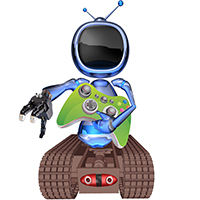 Commissioned by Dstl, this project involved a brief evaluation of the Shadow Robot Company C6M “Smart Motor” Hand, controlled via a human interface based on a 22-sensor, right-handed CyberGlove.
Commissioned by Dstl, this project involved a brief evaluation of the Shadow Robot Company C6M “Smart Motor” Hand, controlled via a human interface based on a 22-sensor, right-handed CyberGlove.
The study took the form of a usability evaluation, in particular measures of effectiveness (task performance accuracy, failures and error rates), efficiency (minimisation of mental and physical workload, effort and time) and “satisfaction”, based on subjective ratings of operability, such as approval, frustration, comfort levels.
Twelve participants took part in the evaluation study. A generic set of ten human grip types – those typically employed by users in day-to-day grasping activities – were defined to provide a schema to evaluate the Shadow Hand. These grips included Hook and Power grips (typically seen when the human hand grips a handle, with the thumb out to one side or wrapped around the handle respectively), Disk grips (as if handling a ball) and Pinch grips between the thumb and middle or index finger.
The experimental task involved controlling the Shadow Hand to pass a range of objects a range of objects – handle, ball, coin and peg – from the participant’s real left hand to the robot hand.
The results
The results suggest that the CyberGlove–Shadow Hand combination produced considerable variability in participants’ performance data. Precision grips involving the index finger were, in the main, achieved successfully, although performance in a number of instances was compromised by the objects being dropped or the session having to be restarted.
The erratic behaviour of the Shadow Hand thumb was also an issue. Precision grips involving the middle finger were the least successful, part of the problem being the often unpredictable behaviour of the middle digit of the Shadow Hand. Fatigue and discomfort were also key factors in defining overall performance.
From a humancentred perspective, the study results questioned:
(a) whether there was an actual need for multi-digit end effectors, specifically those designed to mimic the human hand,
(b) whether there was a need for anthropomorphic forms of data input devices to control said multi-digit effectors.
Dissimilar control devices, if designed with the remote tasks in mind (with appropriate other sensory subsystems, such as haptics), can provide the human operator with as good a biomechanic coupling with the remote worksite.